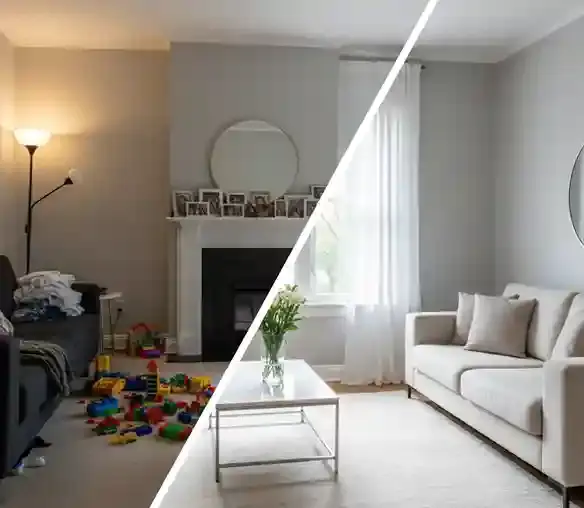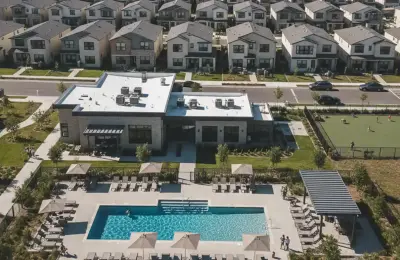
Home staging: secrets that will help you sell your home 20% faster

In today’s competitive real estate world, the first impression is everything. Most buyers form their opinion about a property within the first 60 seconds. This is where home staging comes in. It's not just cleaning; it’s the art of professional pre-sale preparation that transforms your house into a desirable commodity, capable of helping you sell your home 20% faster and for a higher price.
What Is Home Staging and Why Does It Work?
Home staging is a purposeful process of creating a depersonalized, yet attractive and universal interior that allows the maximum number of potential buyers to envision their own lives in the space.
Why is it crucial?
- Emotional Connection: Buyers purchase based on emotion. A well-prepared space creates a feeling of comfort, order, and "move-in readiness," which speeds up the purchase decision.
- Visual Advantage: In highly competitive markets, high-quality photographs are the first filter. Staging ensures your property stands out among hundreds of listings.
- Hiding Flaws: Proper furniture arrangement and a neutral palette help draw attention away from minor imperfections and emphasize the property's strengths (space, light, layout).
5 Key Secrets of Professional Home Staging
Professional home staging includes a series of steps you can execute yourself.
1. Depersonalization and Decluttering: Less Is More
This is, without a doubt, rule #1 of pre-sale preparation.
- Remove Personal Items: Buyers shouldn't be reminded that the home belongs to you. Hide family photos, diplomas, refrigerator magnets, personal collections, and religious artifacts. Your home should become a "blank canvas."
- Decluttering: Pack up and move to storage at least 50% of your belongings. The fewer items there are, the bigger the space appears. This applies to closets and storage rooms, as buyers look everywhere.
- Deep Cleaning: No designer decor can compensate for dirt. A deep clean is required: wash windows, clean carpets, wipe dust off baseboards, and, most importantly, eliminate any unpleasant odors (pets, moisture, cooking).
2. Neutral Color Palette and Lighting
Color and light directly impact the buyer’s mood.
- Neutral Tones: Walls and large pieces of furniture should be in neutral, warm shades (light gray, beige, white). Neutral colors are universal and allow the buyer to imagine their own style. If necessary, refresh the walls with a new coat of paint.
- Maximize Light: All rooms must be as bright as possible. Open curtains and blinds. Turn on all light fixtures during showings. Use bulbs with warm (yellowish) light, as it creates coziness.
- Mirrors: Strategically place mirrors opposite windows or in dark corners to reflect light and visually enlarge the space.
3. Furniture Arrangement for "Flow"
Furniture should showcase the room's functionality, not its clutter.
- Define Purpose: Every room should have a clear purpose (bedroom, office, living room). Even a small corner can be transformed into an appealing "reading nook."
- Create Flow: Arrange furniture so the buyer can move freely through the room. Avoid blocking windows or doorways.
- Less Is Better: If a room feels cramped, remove excess furniture. Leave only the necessary elements to highlight the spaciousness.
4. Curb Appeal: The First Impression
The first impression is formed even before the buyer walks through the door.
- Entryway: The front door should be clean, scratch-free, and possibly freshly painted. Put down a new welcome mat.
- Yard/Garden: Mow the lawn, trim shrubs, and remove any debris. Add seasonal flowers in pots near the entrance to create a welcoming look.
- Facade Repair: Fix obvious damage: repair railings, address peeling paint.
5. Final Details: The "Finishing Touches"
These small details create that emotional atmosphere.
- Textiles: Use fresh, clean, white towels in the bathroom and new bedding on the beds. Coordinate throw pillows and blankets in the living room.
- Freshness: Place a vase with fresh flowers (ideally white or neutral) on the kitchen table. A bowl of fresh green apples in the kitchen is also a classic trick.
- Scents: Avoid strong air fresheners. A subtle scent of vanilla or the faint aroma of fresh coffee or freshly baked goods before a showing is better.
- Photography: After completing the staging, be sure to take professional photographs. High-quality images are the key to the success of your listing online.
Home staging is an investment, not an expense. On average, a professionally staged property sells 20% faster, and the investment in staging returns a profit of 100% to 400%. If you want to successfully sell your home without unnecessary delays, applying these simple yet effective techniques is a mandatory step.
News insight
 Nov 18, 2025
Nov 18, 2025
Property Developer Earnings in the US Market: A Comprehensive Overview
Explore how US property developers earn money. Learn about profit margins (Residential vs. Commercia...
 Nov 18, 2025
Nov 18, 2025
What Is a Build-to-Rent (BTR) Development?
Discover what a Build-to-Rent (BTR) development is. Learn about this growing real estate model, its...
 Nov 17, 2025
Nov 17, 2025
Build-to-Rent: Transforming America's Housing Landscape
Explore how the Build-to-Rent (BTR) model is transforming the US housing market. Learn why instituti...
